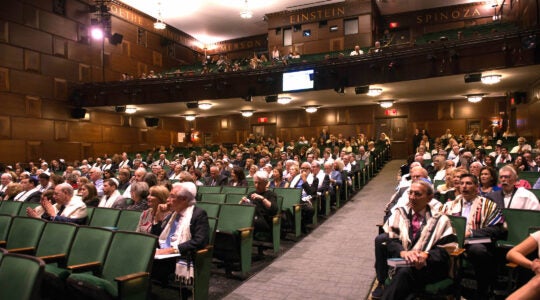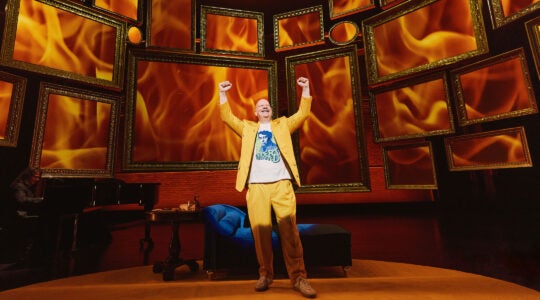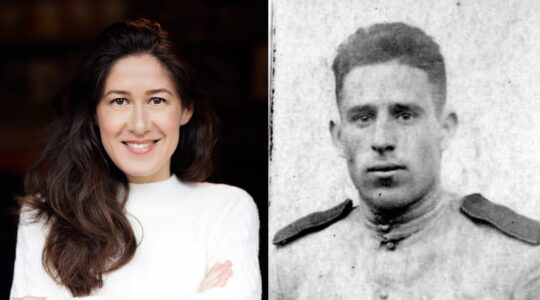Budapest is a city of elegance and grandeur, a cultural delight, abounding with museums, theaters and concert halls, magnificent monuments, lyrical bridges, ancient Roman ruins, soothing thermal baths, picturesque parks and superb cuisine. Once two separate towns that merged into one city in 1873, Buda and Pest lie on either side of the River Danube. Each distinct in its own way, the hills of Buda on the right bank and the sprawling avenues of Pest on the left, easily blend their unique flavor that offers the city its exceptional quality.
After walking across the oldest bridge in the city, I took the funicular to the top of the Buda hills where the Royal Palace stands; it was the residence of Hungarian kings for 700 years. From its lofty perch you can see one of the most exquisite panoramic views in all of Eastern Europe — the staggering beauty of the majestic Parliament building with its opulent spires that dominate the riverbank in Pest. Even more stunning is the view at night, when the lights of Pest shine like jewels.
Budapest’s world-renowned thermal baths, where visitors flock to take advantage of their medicinal benefits, are another of the city’s remarkable attractions. The most elegant of these spas is on Gellert Hill in Buda, which offers tourists a soothing end to a busy day.
On the Pest side of the river I was treated to a performance at the Hungarian State Opera House. Built in the neo-Renaissance style in 1875, its sweeping staircase, colorful frescoes, and brilliant golden tiers rival New York’s Metropolitan Opera House. Strolling down Andrassy Avenue, the elegant main boulevard with stately mansions on either side, I came to one of the most impressive monuments in the city. The Millenium Monument in Heroes’ Square, erected to commemorate the thousandth anniversary of the Magyar Conquest, celebrates the grandeur of Hungarian history. A statue of the Archangel Gabriel stands atop a huge column flanked by colonnades of important figures and majestic statues of the seven tribes who came together to form the nation. On one side of the square is the Museum of Fine Arts, which holds an unrivalled Spanish collection, even more spectacular than that of the Prado.
After exploring the plethora of markets in the city, which overflow with food and folk art stalls offering a variety of world-famous Herend and Zsolnay porcelain, Hungarian goose liver pate, all sorts of paprika, intricate embroidery, fine wines and liqueurs, I spent the evening at the Duma Theater. There, State Folk Art Ensemble dancers in gloriously colored costumes performed traditional Hungarian folk dances, and gypsy violinists created the riveting melodies I remember my Hungarian grandmother listening to on the radio.
Thinking that I’d seen the best of Budapest and what makes it so remarkable, I had yet to enter the Jewish Quarter. And what I discovered there was a truly vibrant Jewish community.
Hungary is home to the third-largest Jewish population in Europe. Today, there are 120,000 Jews in the country, and 110,000 of them live in Budapest. Terezvaros, the Jewish Quarter, is the focal point of Jewish life in the city. Within the maze of winding streets are various functioning synagogues, community centers, social clubs, Jewish schools, kosher restaurants and wonderful Judaica shops.
The largest and most famous synagogue in all of Europe stands majestically on Dohany Street. The interior of the Great Synagogue, a splendid Byzantine-Moorish-style Reform synagogue, took my breath away. Walking down the aisle of its exquisite mosaic floor, past rows and rows of polished wooden pews on either side that hold 3,000 people, I was awed by the stunning Arc of the Covenant, with its golden doors housing many glorious torahs claimed from other synagogues during the Holocaust. Candelabra flicker on either side of the immense sanctuary and grillwork abounds. The huge two-tiered women’s section above, also accommodating 3,000 people, is set behind gleaming carved wood railings.
Only a few blocks away stands the Kazinczy Street Orthodox synagogue, a gem of a building. The red brick façade is crowned with colorful florettes and Jewish stars, and the elaborate interior is well worth visiting.
The scope and breadth of the Jewish Museum in Budapest, close to the Dohany Street synagogue, is equally mind-boggling. The museum is the second largest Jewish museum in Europe and it houses a splendid collection of Judaica, a panorama of the history of Hungarian Jews, traditional Hungarian costumes, and examples of Herend porcelain. In addition to these permanent displays, the museum holds temporary exhibits about Jewish artists in film, fine arts, and architecture.
Behind the Dohany Street synagogue is the Jewish cemetery and the Raoul Wallenberg Holocaust Memorial Park. Wallenberg was the Swedish businessman who helped save tens of thousands of Jews from the camps. His symbolic grave is located in the cemetery where 2,000 victims of the Holocaust are buried. A magnificent monument by the artist Imre Varga called the Weeping Willow commemorates the tragedy — a sculpture of a weeping willow tree with 4,000 metal leaves engraved with names of Hungarian victims. Also within the park are a heart-rending memorial to the children of the Holocaust and a monument to the righteous gentiles who saved many of the victims.
Not far from Jewish Quarter is the Holocaust Memorial Center of Budapest, It was opened in 2004. The complex incorporates a synagogue, exhibition halls, and archives, all intended to document the Holocaust and commemorate its victims. An empty chair inside the restored synagogue that was originally built in 1923 memorializes the Hungarian victims of the Holocaust, while a glass memorial wall that surrounds the courtyard is engraved with 60,000 names of the nearly 600,000 souls who perished. The architecture of the complex is unique — its asymmetrical outline, its dislocating walls, and its descending staircase all symbolize the twisted and distorted time of the Holocaust.
One of the places Jews gather is the Balint Jewish Community Center of Budapest, the only one of its kind in Hungary. “The center is trying to bring the community back to Judaism,” said a spokesman, Miklos Fizser, “by providing a wide range of educational and cultural programs, tailor made for all age groups. Members enjoy our music programs, participating in various clubs, and especially in Judafest, our annual street festival where hundreds of people have the best time.”
On the other hand, thousands of Jews are leaving Hungary and some leaders point to anti-Semitism as the cause. Many Jews feel that the growth of the anti-Semitic far-right political party Jobbik will continue to undermine their security and make it uncomfortable to stay. However it appears that the major cause of the emigration is the same stunted that is affecting other European nations. “The Hungarian Jewish community is vibrant and strong,” said Zsuzsa Fritz, director of the Balint Jewish Community Center. “But people are leaving mostly because of the financial situation, together with the fact that the climate is not very nice for Jews if Judaism plays an important part in their lives.”
Agnes and George Frank, owners of a pizzeria in Budapest, told me that some store owners have closed their businesses not because of anti-Semitism but because they can’t make a go of it in these hard times. “We’re not leaving,” Agnes said, “because our ties to the Jewish community are very strong.”
The New York Jewish Week brings you the stories behind the headlines, keeping you connected to Jewish life in New York. Help sustain the reporting you trust by donating today.




